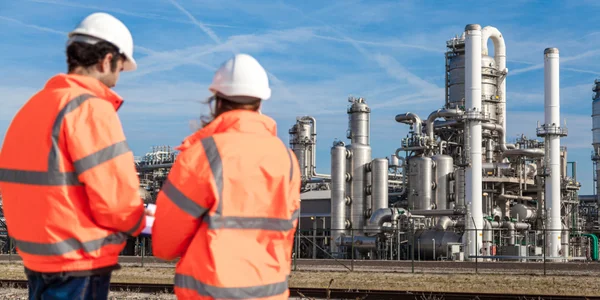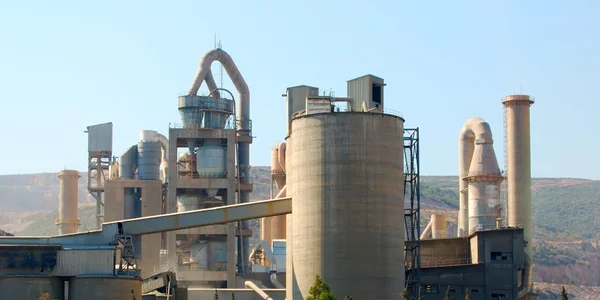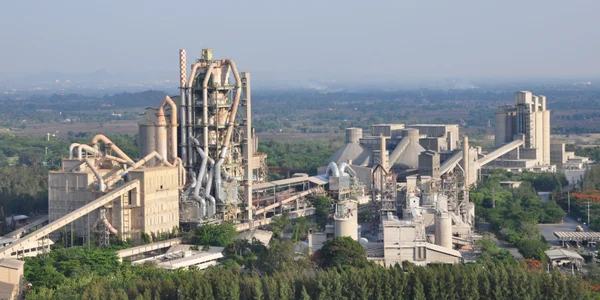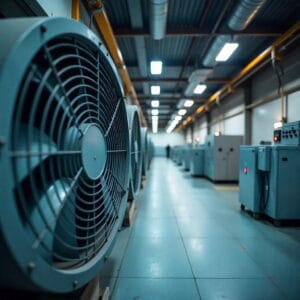Mga opisina
HEADQUARTER

Alemanya
- Intensiv Filter Himenviro Technologies GmbH
Neustraße 45 - 49, 42553, Velbert, Deutschland/Germany - +49 20534200990
REHIYONAL NA TANGGAPAN

Great Britain
- Intensiv Filter Himenviro UK Limited
47, Bath Street WS13BX, Wallsall West Midlands, Great Britain - +44 1922 628893
REHIYONAL NA TANGGAPAN

United Arab Emirates
- Intensive Filter Himenviro Technologies FZE – LLC
Business Center, Sharjah Publishing City Free Zone, Sharjah, UAE - +971-556074697
REHIYONAL NA TANGGAPAN

India
- Intensiv-Filter Himenviro Private Limited
D-247/11, Sector-63, Noida - 201301, Uttar Pradesh, India - +91-120-4642-500
REHIYONAL NA TANGGAPAN

India
- Intensiv-Filter Himenviro Private Limited
D-247/11, Sector-63, Noida - 201301, Uttar Pradesh, India - +91-120-4642-500
REHIYONAL NA TANGGAPAN

India
- Intensiv-Filter Himenviro Private Limited
D-247/11, Sector-63, Noida - 201301, Uttar Pradesh, India - +91-120-4642-500
Steel at Metal Air at Dust Filtration Solutions
Ang mga industriya ng bakal at metal ay bumubuo ng matinding antas ng mga pollutant sa hangin, kabilang ang pinong alikabok, mga particle ng metal, at usok, na, kung hindi makontrol, ay maaaring humantong sa kontaminasyon sa kapaligiran, mga panganib sa kalusugan para sa mga manggagawa, at pagkasira ng kagamitan. Ang aming mga air at dust filtration system ay iniakma upang pangasiwaan ang mga high-demand na kapaligiran, na kumukuha ng mga emisyon mula sa pagtunaw, pagtunaw, pag-cast, at mga proseso ng pagtatapos. Ininhinyero upang makayanan ang mataas na temperatura at mga particulate load, pinapabuti ng aming mga solusyon ang kalidad ng hangin, pinapahusay ang pagsunod sa regulasyon, at pinoprotektahan ang kapakanan ng mga manggagawa, na tinitiyak ang isang mas malinis, mas ligtas na kapaligiran sa produksyon.
Proseso ng Pagsala ng Alikabok sa Industriya ng Bakal at Metal
Ang electric arc furnace ay ginagamit para sa paggawa ng constructional steels, high-grade steels, at hindi kinakalawang na asero. Higit pa rito, ginagamit ito para sa paggawa ng carbide at synthetic crystals.
Ang mga planta ng pag-alis ng alikabok para sa mga electric arc furnace ay ganap na nakakakuha at nililinis ang mga pangunahing basurang gas ng arc furnace, gayundin ang anumang pangalawang basurang gas na nalilikha sa panahon ng fusing, run-off o habang naglo-load at deslagging. Ang mga basurang gas na nabubuo sa pan furnace, sa panahon ng paghawak ng materyal at sa iba pang konektadong mga halaman ay kinukuha at ginagamot.

Filter para sa roof hood
I-filter para sa EAF
- 1. hood ng bubong
- 2. Salain para sa roof hood
- 3. Bentilador
- 4. Chimney
- 5. Electric arc furnace
- 6. Tubing na pinalamig ng tubig
- 7. Palitan ng init
- 8. I-filter para sa EAF
- 9. Bentilador
- 10. Converter
Mga kinakailangang pagtutukoy
Filter Pamagat PJM
Karaniwang data ng disenyo | hood ng bubong |
|---|---|
Dami ng gas | 1,000,000 |
Temperatura ng gas | 80 |
Uri ng alikabok | Iron oxides combustion residues |
Ang natitirang nilalaman ng alikabok | < 10 |
Hilaw na nilalaman ng alikabok ng gas | < 5 |
Paglilinis | online / offline |
Filter medium | Polyester |
Disenyong protektado ng pagsabog | hindi kailangan |
Sorbent | hindi kailangan |
Filter Pamagat PJM
Karaniwang data ng disenyo | Electric arc furnace |
|---|---|
Dami ng gas | 120,000 |
Temperatura ng gas | 120 |
Uri ng alikabok | Iron oxides combustion residues |
Ang natitirang nilalaman ng alikabok | < 10 |
Hilaw na nilalaman ng alikabok ng gas | < 5 – 10 |
Paglilinis | online / offline |
Filter medium | Polyester |
Disenyong protektado ng pagsabog | hindi kailangan |
Sorbent | hindi kailangan |
Mga Application para sa Steel at Metal Dust Control
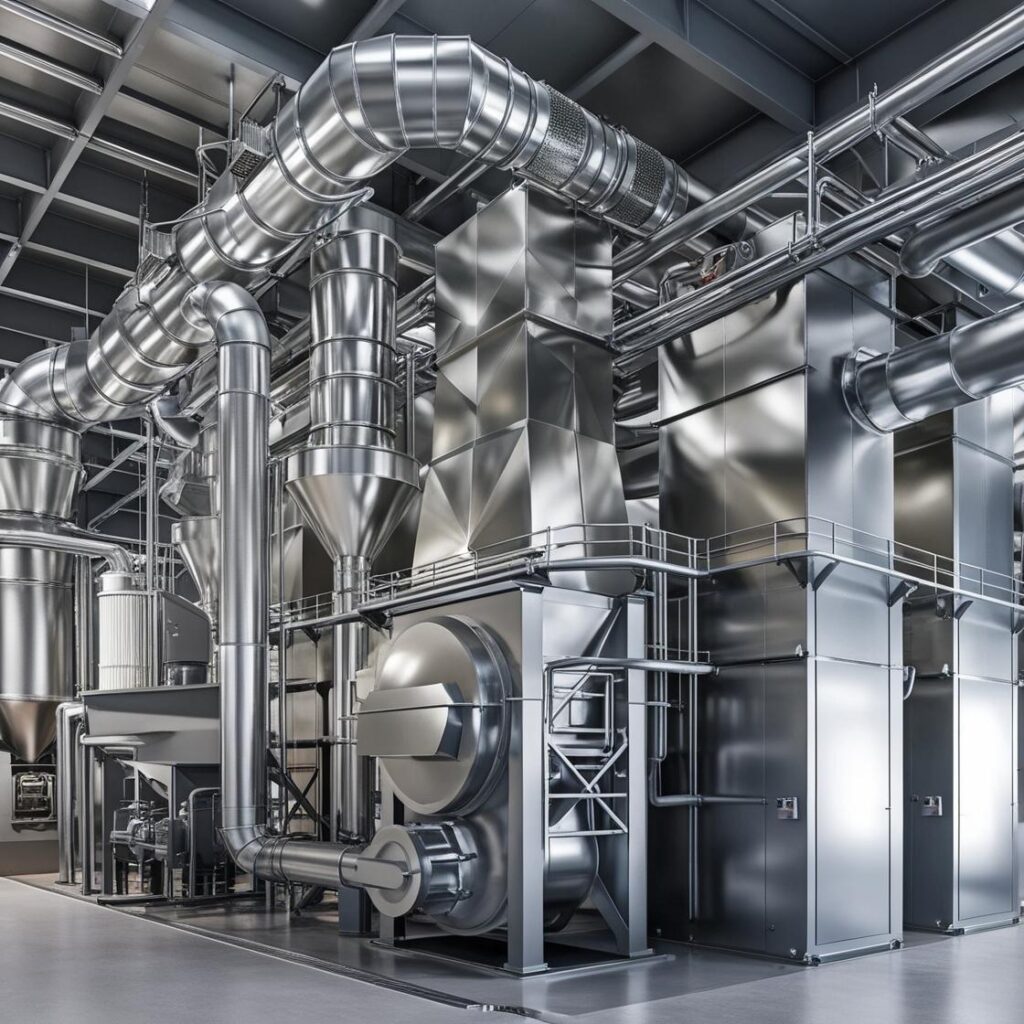
Kinokontrol ang alikabok at mga usok na inilalabas sa panahon ng pagtunaw at pagkatunaw, na kumukuha ng mga mapanganib na particle na nabuo sa mga hurno na may mataas na temperatura.
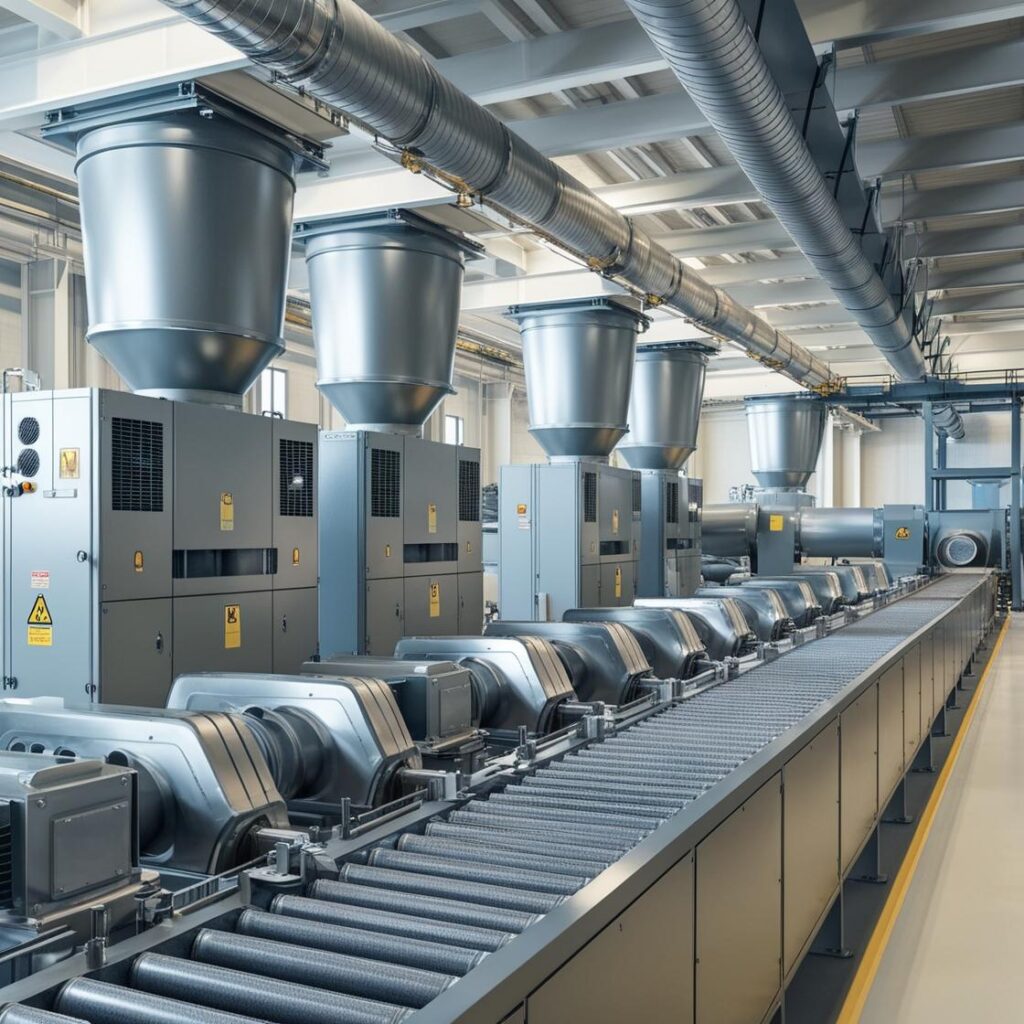
Binabawasan ang mga emisyon mula sa mga pagpapatakbo ng paghahagis, pagkuha ng mga airborne particulate at metal fumes na maaaring makaapekto sa kalidad ng hangin.

Tinatanggal ang pinong alikabok at mga metal shavings na ginawa sa panahon ng paggiling at pag-polish, na pumipigil sa mga kontaminant na makaapekto sa kalidad ng produkto at kaligtasan ng manggagawa.
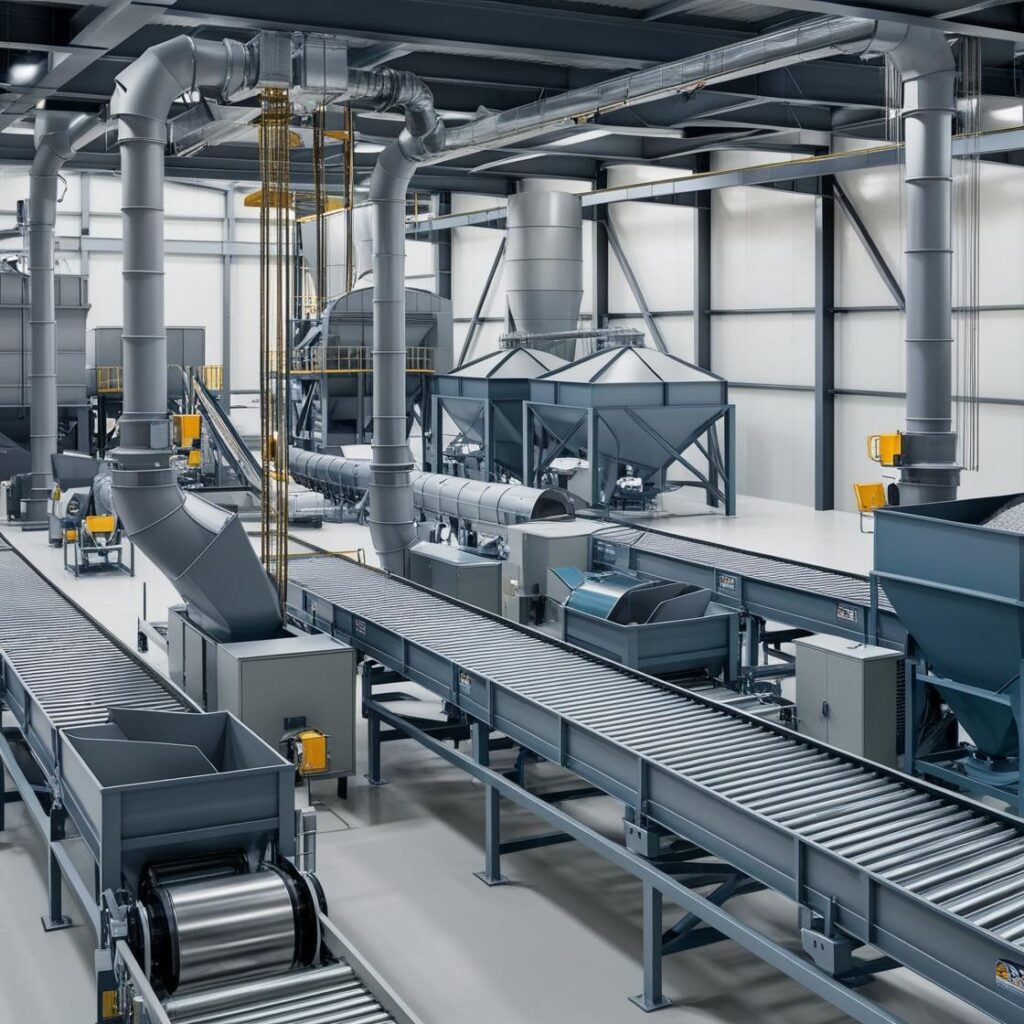
Kinokontrol ang alikabok na nabuo sa panahon ng paghawak, transportasyon, at pag-iimbak ng materyal, na pinapaliit ang paglabas ng particle sa kapaligiran ng trabaho.
Regulatory Landscape para sa Dust Control |
|---|
Pagsunod sa Mga Pamantayan ng Air Quality |
Pagsunod sa Kalusugan at Kaligtasan ng Manggagawa |
Pag-iwas sa Panganib sa Sunog at Pagsabog |
Pagsunod sa Pangangalaga sa Kapaligiran |
Real-Time na Pagsubaybay sa Emisyon |
Panlaban sa init |
Pinababang Pagpapanatili at Downtime |
Pagtitiyak ng Kalidad ng Produkto |
Mas mababang mga gastos sa pagpapatakbo |
Mga Hamon sa Pagkontrol ng Alikabok |
|---|
Mataas na Antas ng Alikabok at Usok |
Mga Panganib sa Kalusugan ng Manggagawa mula sa Metal Particle |
Mahigpit na Regulasyon sa Kapaligiran |
Mga Panganib sa Sunog at Pagsabog |
Kontaminasyon ng Mga Panghuling Produkto |
Nakasasakit na Pagsuot ng Alikabok sa Kagamitan |
Mga Kinakailangan sa Pagpaparaya sa Temperatura |
Pamamahala ng Malaking Dami ng Koleksyon ng Alikabok |
Pagbabawas ng Downtime na Kaugnay ng Pagpapanatili |
Mga Pangunahing Pagsasaalang-alang para sa Mabisang Pagkontrol ng Alikabok |
|---|
Naka-target na Pagkuha sa Mga Emission Point |
Katatagan sa Ilalim ng Mataas na Temperatura |
Na-optimize na Airflow at Pressure Control |
Mga Materyales sa Pagsala na Lumalaban sa init |
Mga Protokol ng Regular na Pagpapanatili |
Pagsunod sa Pamantayan ng Industriya |
Flexible, Mga Custom na Solusyon |
Pagbabawas ng Panganib para sa mga Panganib sa Pagkasunog |
Mga Dedicated System para sa Iba't ibang Yugto ng Produksyon |
Kumonekta sa amin para sa Expert Consultation
I-explore ang Iba Naming Serbisyo!
Mga Madalas Itanong
Sa pagpoproseso ng bakal at metal, ang mga karaniwang sistema ng pagsasala ay kinabibilangan ng mga baghouse filter, electrostatic precipitator (ESP), wet scrubber, at cyclone separator. Gumagamit ang mga filter ng baghouse ng mga bag ng tela upang makuha ang mga particle ng alikabok, habang ang mga ESP ay gumagamit ng mga singil sa kuryente upang alisin ang mga particulate mula sa mga gas na tambutso. Ang mga basang scrubber ay nag-aalis ng mga pollutant sa pamamagitan ng pagpapapasok ng isang scrubbing liquid, at ang mga cyclone separator ay gumagamit ng centrifugal force upang paghiwalayin ang alikabok sa mga gas stream. Ang pagpili ng system ay depende sa mga kadahilanan tulad ng laki ng butil, temperatura ng gas, at mga partikular na kinakailangan sa proseso.
Pinapahusay ng mga sistema ng pagsasala ang kalidad ng hangin sa pamamagitan ng epektibong pagkuha at pag-alis ng mga particulate matter at mga pollutant na nabuo sa panahon ng pagproseso ng metal. Sa pamamagitan ng pagbabawas ng mga emisyon, ang mga sistemang ito ay tumutulong sa mga pasilidad na sumunod sa mga regulasyon at pamantayan sa kapaligiran, sa gayon ay pinapaliit ang kanilang epekto sa kapaligiran at nagpo-promote ng isang mas ligtas na lugar ng trabaho.
Nag-aalok ang mga ESP ng mataas na kahusayan sa pag-alis ng mga pinong particle, na nakakamit ng hanggang 99% na kahusayan, na partikular na kapaki-pakinabang sa paggawa ng bakal kung saan ang mga flue gas emission ay kadalasang naglalaman ng mga pinong dust particle. Ang mga ito ay may kakayahang pangasiwaan ang malalaking dami ng gas at epektibong gumana sa mataas na temperatura. Bukod pa rito, ang mga ESP ay may medyo mababang pagbaba ng presyon, na nagreresulta sa mas mababang pagkonsumo ng enerhiya sa panahon ng operasyon.

